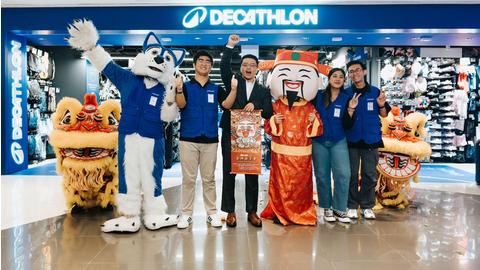Companies news
U.S.-China trade deal: de-escalation confirmed

Euler Hermes has released an executive summary of the recent U.S.-China “Phase 1" trade deal.
The U.S. and China officially signed a “Phase 1” trade deal on 15 January: The U.S. will halve its 15% tariff on about USD120 billion of Chinese goods and suspend planned duties that were set to take effect last December. China should increase its imports from the U.S. by USD200 bn over the next two years and also agreed to greater intellectual property (IP) protection.
- U.S. trade policy volatility could impact Europe: The digital tax, the European car sector, potential retaliation against Boeing subsidies and climate policy could become irritants, triggering (limited) U.S. retaliation.
- What does this mean for markets? As underlying tensions remain unsolved, equity investors will continue to be temperamental on trade news. Trade policy volatility could trigger mini episodes of flight to safety, but monetary policy will continue to be the main driver of global yields. We see the US10Y yield roaming below our fundamental fair value estimate (1.9%) before the 2020 elections.
- What does this mean for companies? All the purchases that China committed to are not equally feasable: While stepping up agricultural imports could be within China’s reach and would be the priority, increasing energy and manufacturing imports could be more challenging. American farmers should benefit from additional Chinese purchases. Yet Brazilian, EU and Australian agrifood exports could be at risk of being susbtituted by imports from the U.S. Similarly for energy, where Russian and Saudi Arabian exports are at risk of being substituted, and manufacturing, where Japanese and EU exports are at risk. At a global level, although 2020 will see a modest improvement from 2019, trade growth will remain subdued.
The U.S.-China “Phase 1” trade deal was finally signed today in Washington. While the Chinese newspaper The Global Times noted that “factors that triggered the trade war have not disappeared,” the deal has the merit of preventing trade tensions from significantly worsening. In that sense, the deal is a short-term relief from uncertainty for market participants and companies. In addition to the deal, de-escalation was confirmed by the U.S. lifting its designation of China as a currency manipulator. But Phase 1 is likely to be the only positive U.S.-China milestone in 2020: On 14 January, U.S. officials confirmed that existing tariffs are likely to stay in place until after the American presidential election, and that any move to reduce them will hinge on Beijing’s compliance with the terms of the Phase 1 deal.
Overall, this reinforces our intermediate scenario of a continued “Trade Feud” until the 2020 U.S. presidential election and beyond. This entails:
- No sizable US-China escalation before the 2020 election for two main reasons: (i) the next tranche of U.S. tariffs on China would cover more consumer goods than previous tranches and hence harm the U.S. consumer on election year; (ii) 86% of goods in the latest category to tariff are imported from China which reduces the possibility of substitution for U.S. companies.
- Still high U.S. tariffs, hovering around 7% vs. 3.5% before Trump’s inauguration, and subdued trade growth (+1.8% in 2020 after +1.2% in 2019, and a modest acceleration to +2.5% in 2021) due to uncertainty and tariffs.
Moreover, while we see no significant escalation, U.S. trade policy volatility could impact Europe: The digital tax, the European car sector, potential retaliation against Boeing subsidies and climate policy could become irritants, triggering (limited) U.S. retaliation.
Focus on purchases:
Agrifood
Stepping up agricultural imports could be within China’s reach and would be the priority, as many trade barriers have been dropped by China. It will not be straightforward for U.S. importers nor for U.S. farmers: soy prices for instance have fallen compared to 2017 and hence reaching the USD32bn additional import target requires an even greater effort in volume, in a context of swine flu (and therefore part of the demand for soy is at half-mast). Hence China making such effort could create losers in Brazil, the EU, Australia (see figure 1), the other main exporters of agrifood to China.
Energy
For energy, looking at the 2017 baseline (see figure 2) shows that the effort on energy imports will be even more sizable to reach the targets. While China has a long term plan to increase the use of natural gas in its energy mix, Russian and Saudi Arabian exports are still at risk of being substituted.
Manufacturing:
The planed boost in manufactured imports includes autos, auto parts, aircraft, agricultural machinery, medical devices and semiconductors. However, it appears that the Phase 1 deal does not address non-tariff barriers that have prevented more U.S. manufacturing exports from entering China, such as procurement rules, product standards and subsidies to Chinese state-owned firms. Moreover, we should take into account consumer preferences, for instance the fact that usually the Chinese prefer German (and Japanese) auto brands. Finally, the higher the product’s technology content (e.g. semi-conductors) the lower the substitutability.
What’s next?
- There is no deadline for the beginning of Phase 2 talks, while the elements left to negotiate are far thornier: As of now, the U.S. says future talks will also focus on digital trade, data localization, cross-border data flows and cyber intrusions. Phase 2 could also focus on China’s industrial policy, a highly controversial matter.
- The positive news is that China came under greater international pressure to reduce industrial subsidies after the U.S., Europe and Japan agreed to push for stronger World Trade Organization rules against market-distorting government aid in a joint statement after a trilateral meeting. It seems the collaborative option is back on the table rather than bilateral escalation.
Credit photo: http://www.dbb.com/project/euler-hermes/


